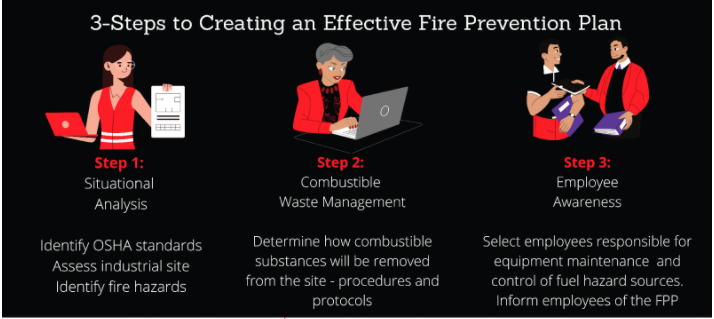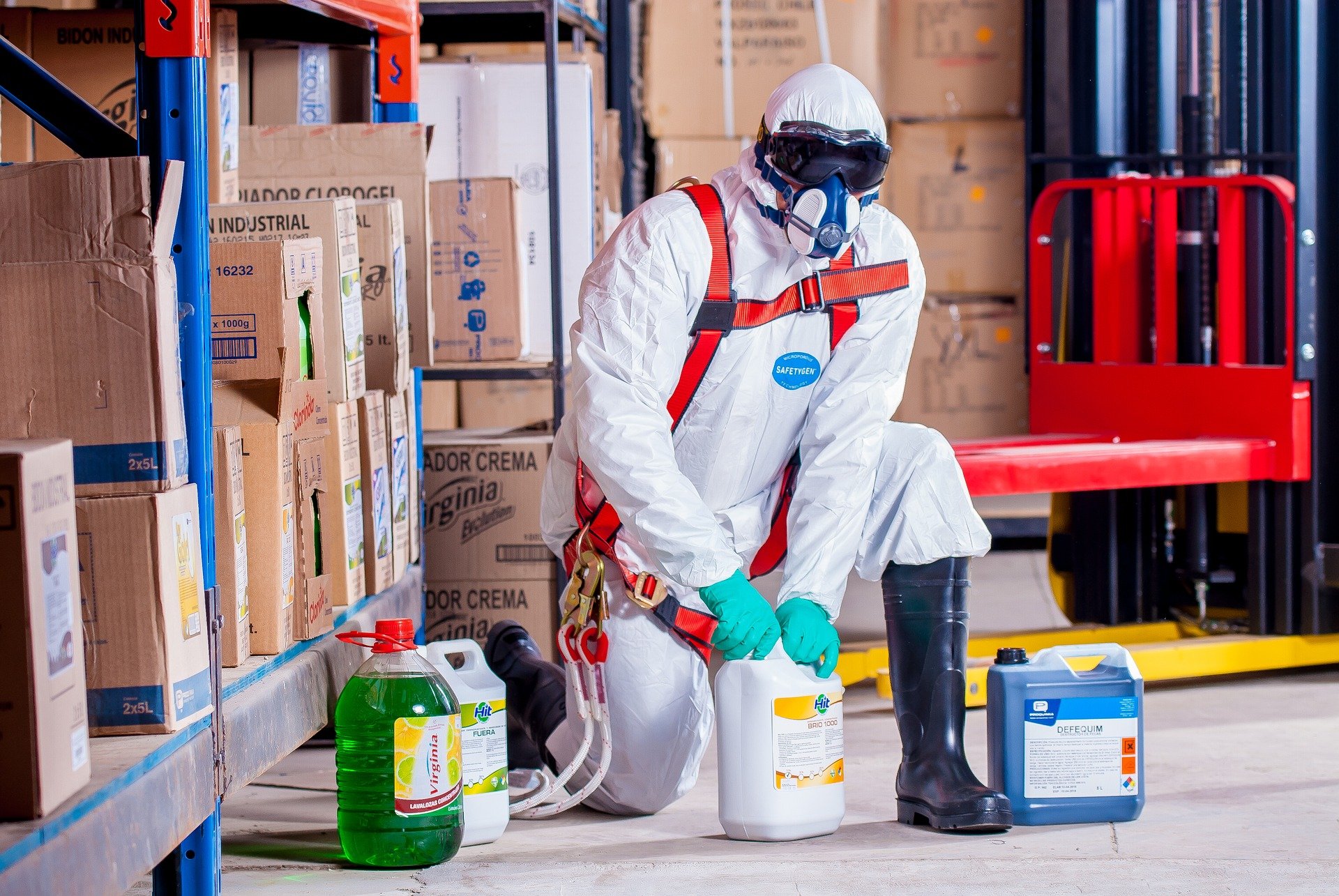Are you trying to put together a Fire Prevention Plan (FPP) to satisfy the varying OSHA standards?
Canada’s Occupational Health and Safety Act (OSHA) alongside the Canadian Center for Occupational Health and Safety (CCOHS) provide employers and employees with the legal structure outlining workplace safety standards and responsibilities. Adopted in 1979, the OSHA Act serves as a guide on how to create safer working environments for workers.
However, in order to understand which OSHA standards are needed to generate a Fire Prevention Plan, we must first be aware of what these standards are.
What are OSHA Standards?
Every country has its own regulations regarding safety.
In the United States, health and safety legislation is governed by the federal Occupational Safety and Health Administration (OSHA). It is this regulatory body that issues the ‘OSHA standards’ in question.
The Canadian equivalent of OSHA is the CCOHS – Canadian Center for Occupational Health and Safety and it follows its own Occupational Health and Safety (OH&S) standards. These standards are typically provincial and as Canada has 14 jurisdictions, each follows its own set of OH&S legislation.
Unfortunately, most Canadian organizations are not cognizant of this difference and mistakenly refer to OSHA standards in Canada when they in fact mean OH&S standards. Nevertheless, it’s worth noting however that many of these OH&S standards are very similar to the American OSHA standards.
With that in mind, let’s turn to the OH&S/OSHA standards that require a Fire Prevention Plan.
OSHA Standards Requiring a Fire Prevention Plan
Because industries are varied and the safety needs of each are unique, workplace safety has been classified into four main OSHA standards. These are:
- General industry
- Construction
- Maritime
- Agriculture
Where can you find OSHA standards specific to your industry?
All OSHA standards can be found in Title 29 of the Code of Federal Regulations (CFR). For quick reference here are the relevant sections:
· Occupational Safety and Health OSHA Standards for General Industry
· Occupational Safety and Health OSHA Standards for Construction
· Occupational Safety and Health OSHA Standards for Shipyard Employment
· Occupational Safety and Health OSHA Standards for Agriculture
While Fire Prevention Plans aren’t compulsory, all organizations are encouraged to have one. An FPP is only mandatory when explicitly demanded by an OSHA standard. For example, for those working in construction, standards that would necessitate a Fire Prevention Plan are use and storage of:
Remember that each of the standards is simply a collection of rules. And every one of these standards has requirements specific to it.
Sometimes a standard may not be available online. When this is the case, employers must check with the Canadian Center for Occupational Health and Safety so they know how to comply with the Canadian Occupational Health and Safety Act.
Armed with this knowledge, how do we go about creating a Fire Prevention Plan? Let’s explore.
3-Steps to Creating an Effective Fire Prevention Plan

Step 1: Situational Analysis
The first step is figuring out the OSHA standard(s) applicable to your industry and assessing what’s necessary to include in your FPP.
From here a careful analysis of your workplace/industrial site must be carried out. This is done in order to identify all major fire hazards.
Fire hazards are materials, substances, and equipment that augment the chances of an accidental fire starting.
Remember for a fire to occur there must be three main elements – fuel, heat and oxygen. So this step is key in identifying two of the three ‘fire triangle’ dangers.
That’s not all. But with identification comes protocol for handling and storing the dangerous materials as well as procedures on how to best safeguard ignition sources.
The type of fire protection equipment needed to control the identified fire hazards will also be spelled out in this step.
Step 2: Combustible Waste Management
There must be a plan in place to control the accumulation and subsequent disposal of combustible waste materials. Flammable waste substances should not be kept on-site for extended periods of time with no propositions on how to eliminate them.
A well-thought-out FPP will include strategies that detail how these substances will be removed from the site.
Under this step will also be guidelines for routine maintenance of the safeguards on all heat-producing machinery and equipment. These safeguards are pivotal in preventing the ignition of combustible elements identified in step 1.
Step 3: Employee Awareness
Because Fire Prevention Plans are employee-safety-centric, a core part of creating your workplace FPP involves carefully selecting the employees who will be responsible for equipment maintenance in order to avert incidental ignition of flammable materials.
Their names and respective job titles are to be mentioned in the FPP. So too are the names of those workers tasked with control of the fuel hazard sources.
Lastly, where employees are concerned, this FPP in its entirety must be made available to them in writing and stored in a place that’s easily accessible to all.
Employees have a right to be briefed on all fire hazards they will be exposed to as well as educated on the company’s fire safety plan.
Resources to Help You Write Your FPP
Drafting a Fire Prevention Plan can be difficult if you don’t know the local legislation concerning workplace safety.
If you’re in Ontario and unsure about OSHA standards, a consultation with your local fire department or fire specialist is in order.
In case you’re ready to get started with a rough draft, here are various FPP templates you can model yours after:
Fire Prevention Plan Template A
Fire Prevention Plan Template B
Fire Prevention Plan Template C
Alternatively, you can reach out to us at Nutech Fire Prevention we’re always ready to help.
The Bottom Line
Whether you’re concerned about fire prevention for home or the workplace, the Nutech Fire Prevention team is on hand to give you the advice you need to boost fire safety wherever you are.
We’re also experts in the service, installation, and maintenance of fire alarm systems, fire warning systems, fire extinguishers, exit lighting, emergency lighting, emergency backup generators, gas detection and sprinkler systems, as well as the creation of fire safety plans.
Don’t hesitate to contact us to request a free quote today.

